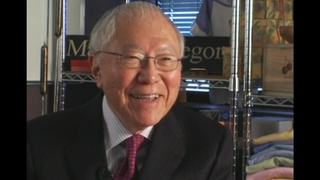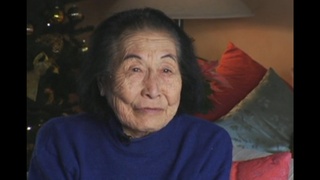Interviews
Working tirelessly after the war (Japanese)
(Japanese) After the war, when I started working for the Allied Occupation forces, my English was just terrible. I completely forgot it all. But after interacting—after talking with everyone, like the American G.I.s—I picked it back up fairly quickly. This word, that word… Honestly, looking back, I should’ve been studying harder at that time, but I was just frantically trying to [know enough to] get by. So when I was interpreting in Yokohama, I just said blah-blah-blah and got through it, and even after I entered the U.S. Army, you know… Even my education in Japan, I graduated junior high but never attended college. Now after moving to the states, I didn’t have a chance to attend an American college either, since I started working right away after the war. So I kind of regret leaving my education halfway, unfinished. Then again, I was able to raise my kids, and all of them made it all the way to college, so I was very happy about that.
Date: June 17, 2008
Location: California, US
Interviewer: Yoko Nishimura
Contributed by: Watase Media Arts Center, Japanese American National Museum
Explore More Videos

Teacher who helped with lisp
(b.1926) Democratic politician and three-term Governor of Hawai'i

Politics in ethnic studies
(1926 - 2012) Scholar and professor of anthropology. Leader in the establishment of ethnic studies as an academic discipline

Acculturation
(b.1964) California-born business woman in Japan. A successor of her late grandmother, who started a beauty business in Japan.

Japanese are more accustomed to foreigners
(b.1964) California-born business woman in Japan. A successor of her late grandmother, who started a beauty business in Japan.

Training for football by carrying 100-lb bags of grass over mountains
(b.1925) Nisei of Okinawan descent. Had a 38-year career in Japan as a baseball player, coach, scout, and manager.

Teaching at the military language school during World War II
(b. 1924) Political scientist, educator, and administrator from Hawai`i

Lesson learned from community college faculty
(b. 1924) Political scientist, educator, and administrator from Hawai`i

Learning English upon discovering that family could not return to Peru
(1930-2018) Nisei born in Peru. Taken to the United States during WWII.

Starting over after the war: denial of all things Japanese
(b. 1923) Nisei from Washington. Resisted draft during WWII.

Her early life in Canada
(b.1912) Japanese Canadian Issei. Immigrated with husband to Canada in 1931

Japanese school
(b.1924) Japanese Canadian Nisei. Interpreter for British Army in Japan after WWII. Active in Japanese Canadian community

Strict school policy of separating boys and girls in Japan
(b.1920) Japanese Canadian Nisei. Established the Ikenobo Ikebana Society of Toronto

Growing up outside of Portland’s Japanese community
(b. 1921) Nisei businessman. Established "Made in Oregon" retail stores

Education in a Buddhist temple and a country school
(1914-2018) Founder of the largest gladiolus bulb farm in the United States.

Closing the Japanese school and deportation (Spanish)
(b. 1932-2016) Peruvian painter
